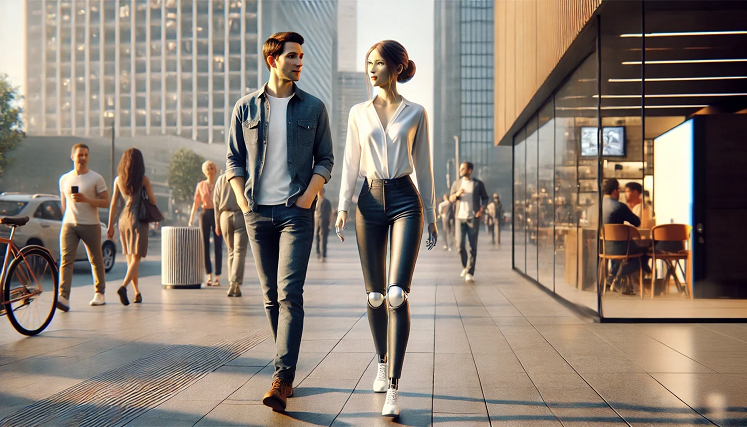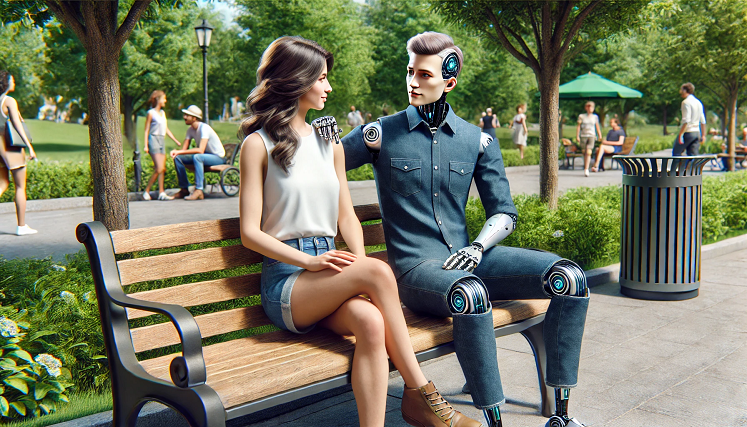Today, let’s explore a topic that’s capturing hearts, minds, and imaginations: AI-powered companion robots. These robots are no longer science fiction but are fast becoming part of our daily lives. From offering friendship to providing vital assistance, companion robots are designed to interact with humans on an emotional level, marking a profound shift in robotics. But where is this trend headed, and what does it mean for our future? Let’s take a look.
1. The Rise of Emotional AI in Robots
In the early days of robotics, robots were purely functional — programmed to accomplish specific tasks without awareness or engagement with human emotions. Today, however, AI developments in natural language processing (NLP), machine learning, and emotional recognition mean that robots can understand and respond to human emotions.
Companies like SoftBank Robotics and Boston Dynamics are pioneers, but the future likely holds even more refined abilities. Companion robots of the future might be able to gauge subtle emotional cues from body language, vocal tone, and even facial expressions. This level of “empathy” will help them interact with humans in ways that feel natural and comforting. Imagine a robot that senses your mood and knows just when to offer a word of encouragement or a gentle reminder to take a break.
2. From Healthcare Helpers to Aging Companions
One of the most promising applications of AI companion robots is in healthcare and elder care. As the global population ages, more people will need consistent and compassionate care, and not everyone has family members available to provide it. Robots designed specifically for elder companionship are already on the market, like ElliQ, a robot that engages seniors in conversation, offers health reminders, and even suggests hobbies and activities.
The future could see these robots going even further, monitoring vital signs, providing cognitive stimulation through interactive games, and connecting seniors with healthcare providers in real time. For those dealing with loneliness and social isolation, companion robots could be life-changing, offering a sense of presence and purpose.

3. Personalized Learning & Adaptability
Today’s companion robots are relatively standardized, designed to perform a set of programmed interactions. But as AI progresses, so will the robots’ ability to learn from individual users and tailor their interactions accordingly. Future companion robots will likely be able to recognize the quirks and preferences of each user, adapting their behaviors and conversations in real-time. This will make them feel more like friends or family members than ever before.
Imagine a companion robot that learns what topics you enjoy, your favorite music, or even your sense of humor. Instead of the one-size-fits-all approach, robots will become more customized companions, giving each interaction a sense of uniqueness and authenticity.
4. Bridging Language and Cultural Barriers
Another incredible prospect for future AI-powered companion robots is their potential to bridge language and cultural divides. With advancements in NLP and multilingual AI, robots could eventually communicate fluently in many languages and understand cultural nuances. This could be invaluable for users in multicultural or multi-generational households, allowing seamless interaction regardless of language differences.
Such capability could also help travelers, offering companionship and guidance without the need for human translators. Imagine traveling alone in a new country, accompanied by a robot that knows both the language and local customs, acting as your personal guide and translator. The convenience and inclusivity could revolutionize how we interact globally.
5. Ethical Considerations: Privacy, Dependency, and Emotional Impact
With all this advancement, it’s crucial to consider the ethical aspects of AI-powered companion robots. First and foremost, privacy is a significant concern. As robots become more emotionally attuned, they’ll need to collect data on users’ behaviors, emotions, and interactions. Ensuring that this information is secure and private will be paramount.
Another important consideration is the risk of dependency. While companion robots can be valuable, relying on them too heavily could reduce human-to-human interactions. This raises questions about the emotional and psychological impact of AI companionship versus human companionship.
Ethical frameworks and responsible design will be essential in shaping the future of these robots. Companies developing companion robots will need to consider user well-being, creating boundaries that foster healthy relationships with these digital friends.
6. A World of Possibilities
As AI continues to evolve, so too will our relationship with companion robots. In the near future, we may see these robots play an even greater role in therapy, education, customer service, and everyday companionship. Whether it’s offering mental health support, providing a caring companion for someone living alone, or helping children with learning difficulties, the applications of these robots are boundless.
In a world where loneliness is increasingly common, companion robots offer an exciting way to enhance well-being. With the potential to blend companionship with care, understanding, and assistance, they’re more than just gadgets — they’re companions who could enrich and empower lives.

Final Thoughts
What’s on the horizon? As AI advances, companion robots are poised to redefine how we connect, merging technology and human interaction in unprecedented ways. While challenges remain, the potential for these innovations to enrich our lives and relationships is undeniable—a journey filled with exciting possibilities and well worth following.
Here at GertieBlu, we’ll be watching closely to see where this remarkable field leads. Stay with us as we explore what the future holds!
Thanks for reading,
GertieBlu









